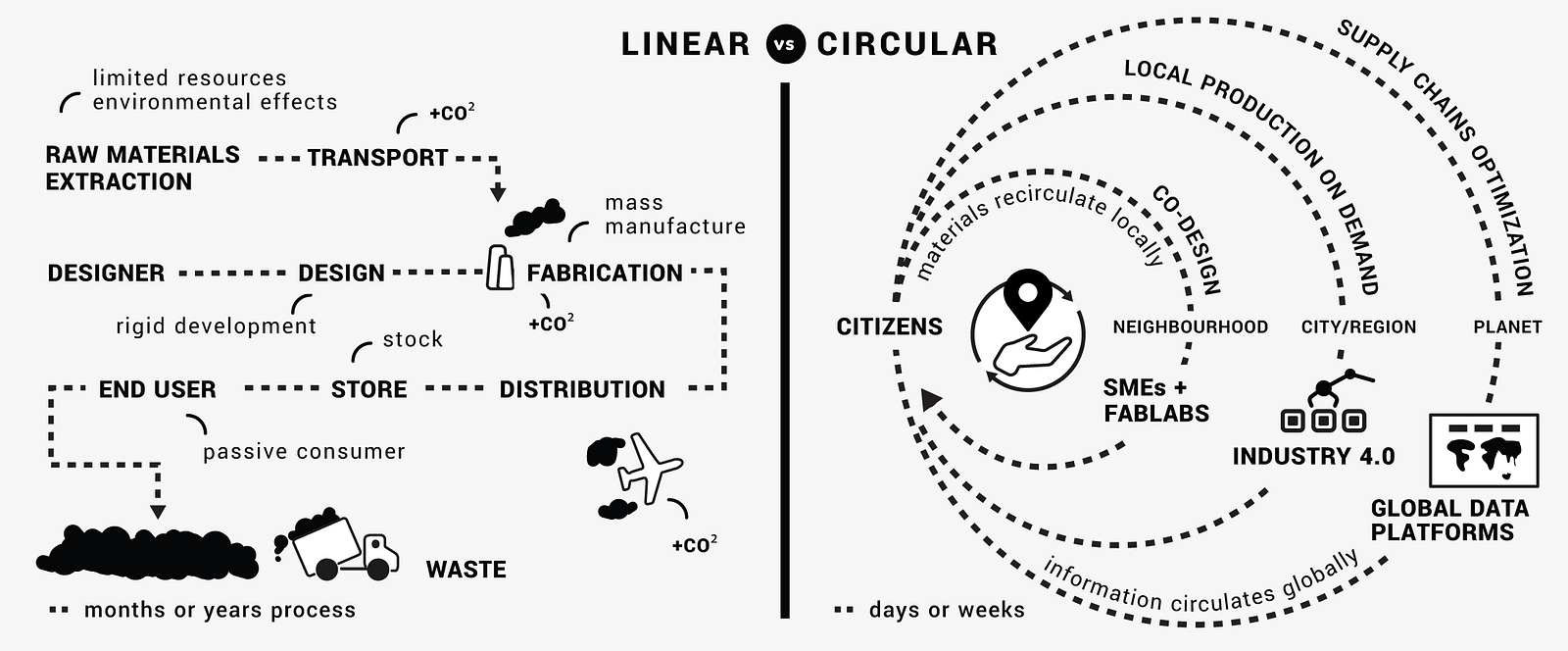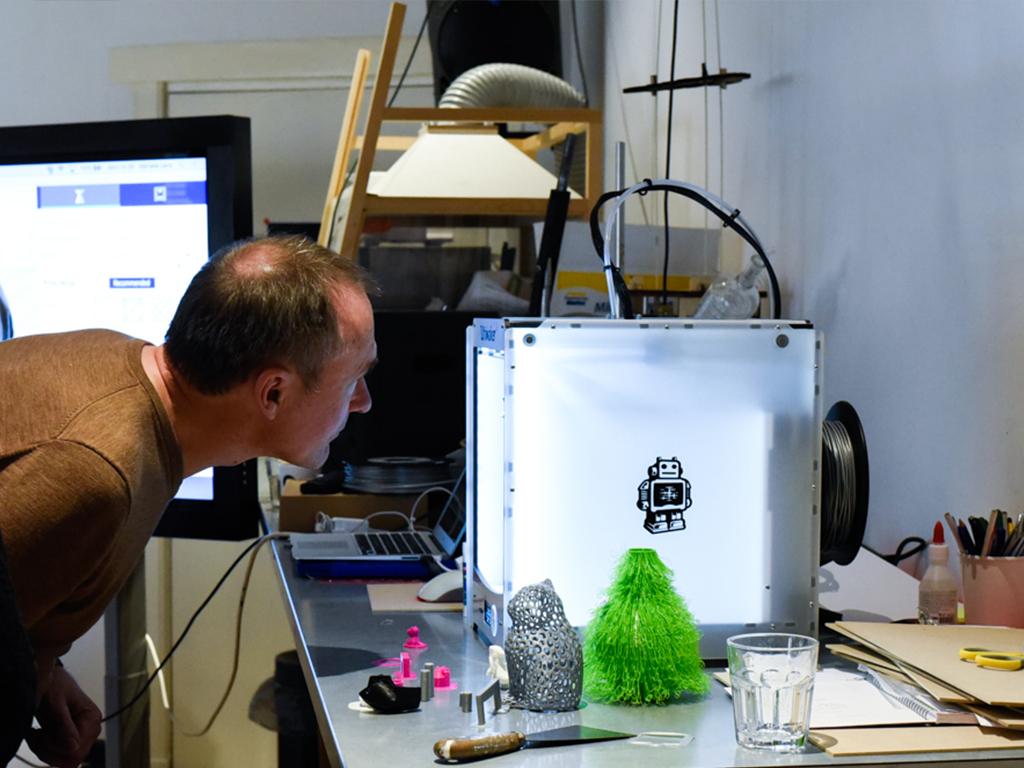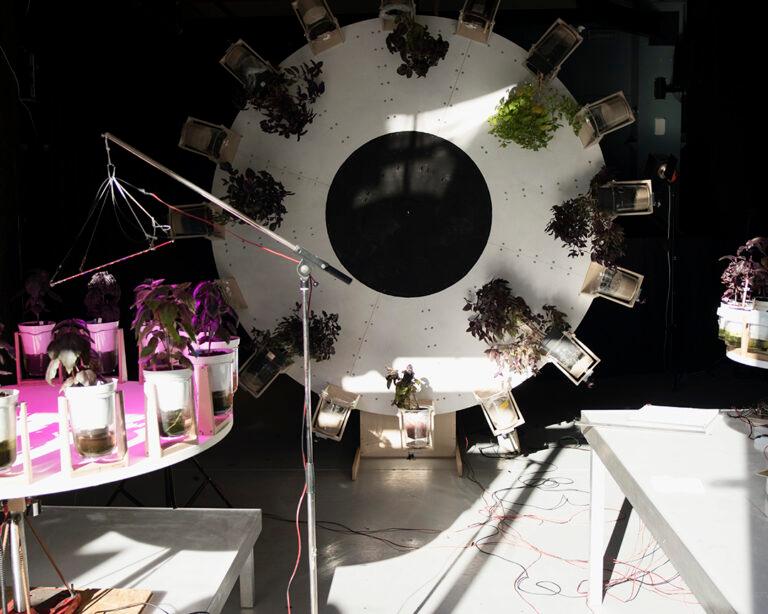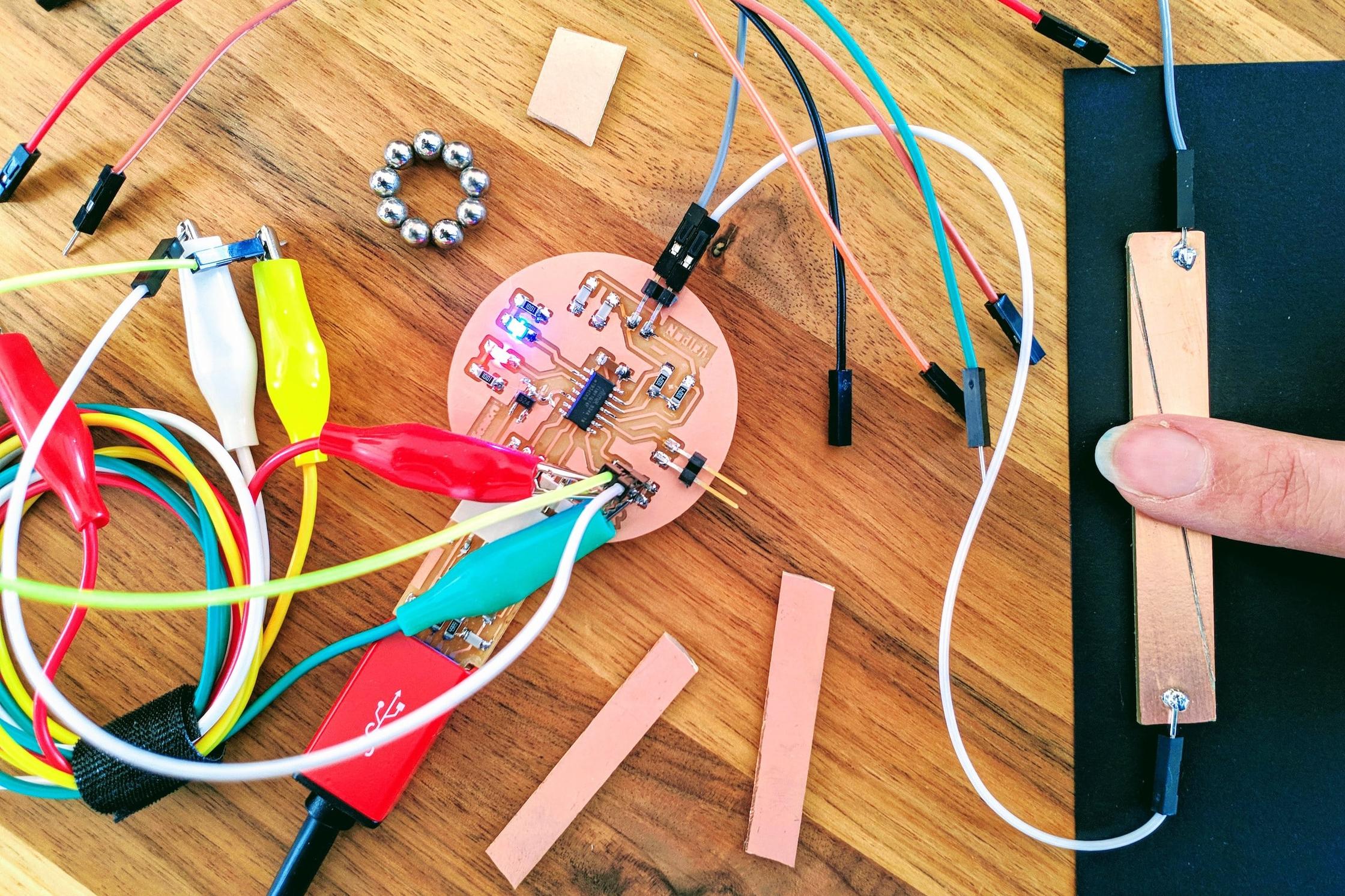Imagine vibrant communities of people, working together in an open, transparent, fair way, building their cities, their living and learning environments together, eco-friendly and inspiring sustainable economic and social models. Connecting and sharing knowledge, perspectives and values on everyday challenges worldwide, collaborating and advising each other on how to solve these challenges on a local level, only using material resources locally available and reducing our footprint on the planet. Imagine a Society 4.0.
We are in transition. Political disruptions, anxiety over migration issues, rapid urbanization, the screams for climate action now! And who could have imagined ten years ago that terrorist attacks would become part of daily life in Europe. When we let all of this get to us too much it can have a serious destabilizing effect. Luckily in the midst of all this there is also a lot of good developments. There finally is a widespread realisation that fake news is easily spread and media are far from neutral. Even if the media only “report” they still strongly influence our thoughts and opinions by giving a news item attention in the first place. And secondly and even more important people are realizing that care for the planet is not a leftist activist hobby. Finally people start to see that it all links together. We need holistic approaches that include climate action, migration, economy and politics. In the midst of all this we all explore our own ways to try and get grips on the world. We seek new balances. I guess we could say that while humans are so perfectly capable of making a mess of things, we are also very well equipped to move on, be resilient, positive, future oriented and see opportunity.
One of those opportunities lays in extremely rapid technological development. High tech is becoming more and more affordable and thus accessible to wider audiences with many social innovation opportunities as a result. It paves way for both personal and collective action, to make sense of the future, to shape it and make it our own. Of course we also see the challenges it poses us in terms of privacy, security and impacting the way we value intellectual property and the related economic models. We will need to re-evaluate our roles and professions. We need to develop new skills and mindsets. With technology becoming ubiquitous (or actually it being so already) we need to understand the importance of technological craftsmanship, become technologically fluent. We need a critical, constructive can-do attitude towards it. That’s for sure.
Seeing the bigger picture is one thing, unravelling it into small accessible steps towards this new future is another. Though it is exactly where we need to start. Close to home, where citizens can make a difference themselves. Every small piece of the puzzle will make that picture clearer.
The following article is inspired by an EU grant application called MakerHoods, coordinated by Waag in collaboration with Fab Lab Barcelona, WeMake Milan, 2P Foundation, Dyne and Joint Research Centre. While the results are still pending, we are keen to share with you the main challenges and solutions put forward in the application.
Leveraging the value of the Maker Movement
As identified by the United Nations migration and rapid urbanization will increasingly exert pressure on our cities and the way we live. Though as referred to above social and technological innovation provide us with huge opportunity too.
In recent years a growing movement of people have developed inspiring digital solutions to cities challenges. Advances in technology, such as the open source and open data movements, low-cost open hardware, crowd sourcing and Internet of Things (IoT) play an important role. By empowering citizens and engaging them in civic action, providing optimal access to these technologies, we have the opportunity to open up new ways of building social movements, deliver public services and create social impact in domains like healthcare, education, democracy, environment, transport and housing. A large number of (European funded) projects done over the last years have demonstrated valuable insights and results. They have shared their influence on society and contributed to the emergence of urgent requests for the political agenda. The challenge is to scale up. How do we go beyond the local? What are next steps in democratizing technology and contributing to more fair, more inclusive and sustainable city life or even a more sustainable world?
As long as there have been cities, there have been makers. Today’s makers are crafters, artists and artisans, technologists, hobbyists, amateur scientists, entrepreneurs, engineers, woodworkers, roboticists, and many others. They are creative problem-solvers whom in recent years have gained confidence that they can tackle ever-larger problems. One of the major challenges makers have is how to remake the city for the better.
Specifically fuelled by the increased affordability and access to personal digital fabrication technologies and accessible facilities such as Fab Labs and makerspaces, the maker movement has gained a lot of traction in the last couple of years. Only the Fab Lab network by January 2017 already comprised 1,100 Labs around the world: 597 Fab Labs in Europe, 151 in the US, and 375 in the rest of the world. Then count on top of that the numerous makerspace facilities that are not branded Fab Lab but equally valuable for their community impact.
Though this maker movement is about more than just making. It is about the voluntary association, cooperation, and shared purpose that cultivates Maker Culture. It can come to define a city: Maker City or a Fab City. The Fab City is a new urban model where citizens are empowered to be the masters of their own destiny, their resilience is increased and a more ecological system is developed because movement of materials and energy consumption is drastically reduced. The Fab City is a global project to develop locally productive and globally connected self-sufficient cities. It comprises an international think tank of civic leaders, makers, urbanists and innovators working on changing the paradigm of the current industrial economy where the city operates on a linear model of importing products and producing waste, towards a circular city model. The Fab City Initiative already has sixteen members (cities, regions or countries), and is expecting over twenty five by the end of 2017.

Graphics by Fab City Research Lab | IAAC
The MakerHoods project is part of the Fab City Initiative, and as partners we have identified three challenges that have had a limiting effect on leveraging the value of maker movement initiatives so far. Let us explore:
a. Global challenges local solutions
Despite the promise of global access to knowledge through world wide maker networks, it appears yet to be very difficult to copy local solutions from one site to the other. Though many challenges are to an extend universal, their local solutions may vary because of economical and political situations, language and cultural differences, access to material and infrastructural resources, differences in practical skills, access to local stakeholders and support partners. Communities need to adapt solutions to meet their own situated needs. Solutions that are scalable to multiple locations and circumstances in the context of Digital Social Innovation (DSI) need to be small-scale interventions with a limited complexity and close to universal human needs in daily life.
b. Uptake of project output
Though many organisations including our own act in the field of DSI it has proven difficult to come to widespread uptake of project results and outputs. Despite the good intentions and high quality of the output, publishing a toolkit or platform has proven insufficient to ensure large-scale uptake. One can draw a parallel to “virals” on social media platforms. No video goes viral by itself. It needs to be carefully orchestrated and pushed or it even better: it needs to touch that unexpected sweet spot. People need to relate to it, they need to not feel “owned” but feel ownership, and it needs to gain critical mass. Added complexity is the fact that while sharing a video requires minimal time and effort from an individual, starting a movement through a physical project or intervention requires a lot more in terms of means, materials, social engineering and the like. Finally although their intrinsic motivations are very socially rooted, organisations working in the field of DSI also have bills that need to be paid. We need to be aware of their financial limitations and support them in finding resourceful funding opportunities.
c. Sustainable reciprocal relations
In communities of makers value is created and exchanged continuously. This is a process which is largely invisible, unregistered and includes all sorts of ‘soft’ and ‘hard’ value: it includes usage of machines, tools, and documentation as well as transfer of skills, instruction and materials. The invisibility of this exchange is exacerbated by the transient character of many activities in Fab Labs and makerspaces. Internships, exchange programs, courses and academies generate huge amounts of value but typically this value turns invisible as soon as the activities end.
Although the flexible, open and agile social context of Fab Labs and makerspaces is an asset on multiple levels it does not allow for the emergence of a social context balancing the effort of each member. In a stable community each member has a mental balance of value given to and received from the community, a result of continuous and sometimes subconscious negotiations between members. For the well-being of its members and the success of a community as a whole, a trusted way to balance cost and benefit is enormously important.
From neighbourhoods to MakerHoods
Having explored these three challenges that have a limiting effect on the value of local maker movement initiatives, let us propose a set of at least three actionable insights to go forward with.
1. Neighbourhoods as unit of scale
To mobilize citizens to act upon today’s city challenges we need to zoom in on neighbourhood level and awaken their makers “can-do-spirit”. Neighbourhoods are not only ecologically and economically effective modules, they form the indispensable basis for social city life (pdf). They are tangible platforms for collective awareness and provide an actionable scale for citizens. It provides a sense of ownership and allows for self-organisation. We foresee Fab Labs and makerspaces and the maker movement around it will become essential part of that social fabric of future sustainable cities only when and if we zoom in at neighbourhood level. This means building local networks around these facilities, connecting to citizens, craftsmen, entrepreneurs, businesses, schools, libraries, social impact groups and stakeholders that have and action radius that includes a specific Fab Lab or makerspace.
2. Mobilize to replicate good practice
We need to valorise on the promise of global knowledge local solutions and demonstrate how indeed many of our solutions work in different locations. We need a model for replicating good practice, though in a hands-on way leaving enough space for adjustments to local mindsets, cultures, conditions and resources. We need to stir clear of endless reflections on how we might do things, but practice what we preach. We need to show how it’s done and inspire and enable others to do the same. Not by publishing yet another toolkit, but engage in active knowledge transfer and peer learning.
If we want existing successful solutions to “go viral” we need to actively engage citizens, offer something that really fits their needs, and which they can adapt and customize. Furthermore we need to guide them in the adoption process and support them to become ambassadors of the proposed solution. This amongst others can be achieved through adapting and customizing technologies, as the process of adapting and customising technologies can translate into a sense of ownership that is known to fuel sustained engagement. The use of open source software and open source hardware is key.
Finally we need to enable our future citizens to develop a maker mindset: that attitude that gets us into that modus of doing what comes naturally. To first do, than think and reflect. To not be scared of failure, limited by group pressure or rational judgements. To be inspired by sharing things that are not finished, to open us up to alternative ideas or solutions you did not think of before. Here obviously also lays an important opportunity for formal and informal education.
3. The MakerWallet
In order to leverage the value of Fab Labs, makerspaces and maker movement we need to work on building long lasting reciprocity chains amongst neighbourhood communities, local entrepreneurs and other city stakeholders that meet, work or otherwise have a stake in what happens in these facilities. We propose a digital value exchange system we name the MakerWallet.
The MakerWallet allows for people with different expertises and backgrounds to join in and be valued for their contributions in Fab Lab or makerspace activities or results. It enables them to bring-in and trade knowledge, skills and resources in a collectively agreed weighted manor. Be it through delivery of source materials, their skills in digital fabrication or traditional craftsmanship, their access to educational networks or external funding or any otherwise relevant input to a task at hand. The promise of the MakerWallet is that it will support an active growing network of citizens working together to solve cities challenges.
To conclude
In this article and the MakerHoods proposal on which it is based, we have identified a set of actions that will allow to push forward the Fab City Initiative; allow Fab Labs and makerspaces and its surrounding maker movement to play a more effective role in tomorrow’s sustainable cities. We believe this is done through focussing on neighbourhoods as a unit of scale, mobilizing people to leverage global knowledge effectively on local level and support sustainable reciprocal relations through a digital value exchange system.
While our main focus is to create tangible and replicable solutions, we will also need to address ethical issues regarding sustainability at the neighbourhood level, such as inclusiveness, openness and justice.
The world is changing rapidly, we better stay on top and take matters in our own hands while we can!
With many thanks to all who contributed to and supported the writing of the MakerHoods proposal. Original source at Fab.City blog.


